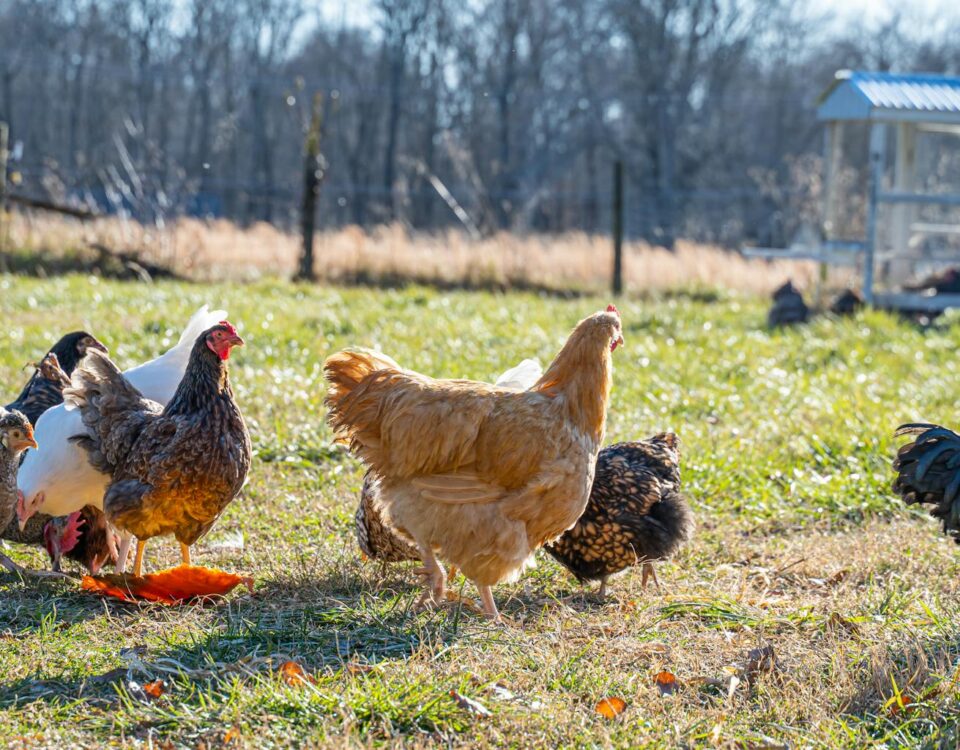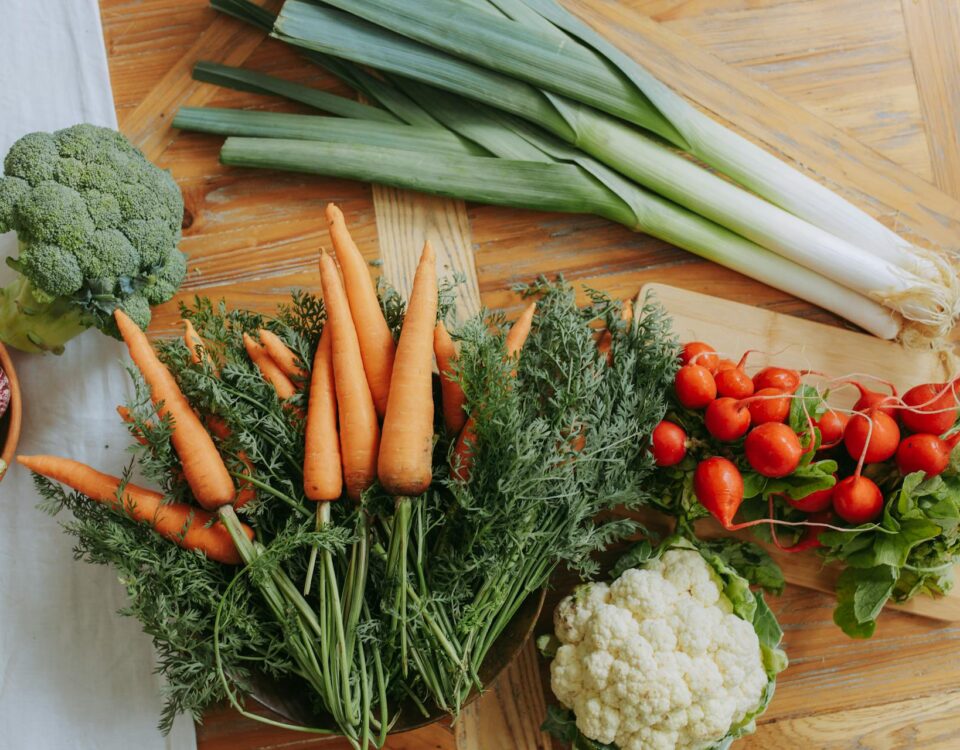
Save Money & Be Creative Using Regifting for Holiday Gifts
December 5, 2023
Planning Your Spring Flower Garden
February 6, 2024Winterizing, Planning & Increasing Yield
When we think of winter we think of cold, frost, rain, and snow. Winter seems to be a time to hunker down indoors, but it’s also a wonderful time to plan your spring garden, winterizing your current garden, and increasing your yield through some simple techniques that let you grow vegetables year-round. We will share with you today some ways of winterizing your garden that’s made easy and can extend your growing season through the winter months.

Vegetable gardens need special care going into winter. It’s good to know the hardiness level of your different vegetables. Tender vegetables don’t tolerate frost and should be harvested before the first frost or covered with our instant greenhouse idea below.
Tender vegetables are tomatoes, zucchini, peas, beans, squash, and pumpkins. Hardy vegetables can tolerate hard frosts with temperatures down to 25 degrees and actually taste better after a light frost. Hardy vegetables include brussels sprouts, kale, broccoli, and spinach.
Semi-hardy vegetables can tolerate light frosts of temperatures down to 29 degrees and include cabbage, Swiss chard, arugula, leeks, mustard greens, cauliflower, some peas, carrots, turnips, and beets.
Harvesting & Drying Herbs

Before your first frost is a good time to pick your herbs and dry them for use during the year. Make sure you pick when the herbs are dry and there hasn’t been a recent rain. Most herbs can be tied or rubber banded in bunches and hung from your garden shed beam or in your garage. You want a place for your herbs to dry that has low moisture and reasonable heat so they don’t mold and dry properly.
Create an Instant Greenhouse
I’ve been teaching this method of creating an instant greenhouse for years and it serves a double purpose in the winter and summer since the instant greenhouse can be fitted with shade cloth so you can grow vegetables that like lower temperatures or light shade even in direct sun conditions.
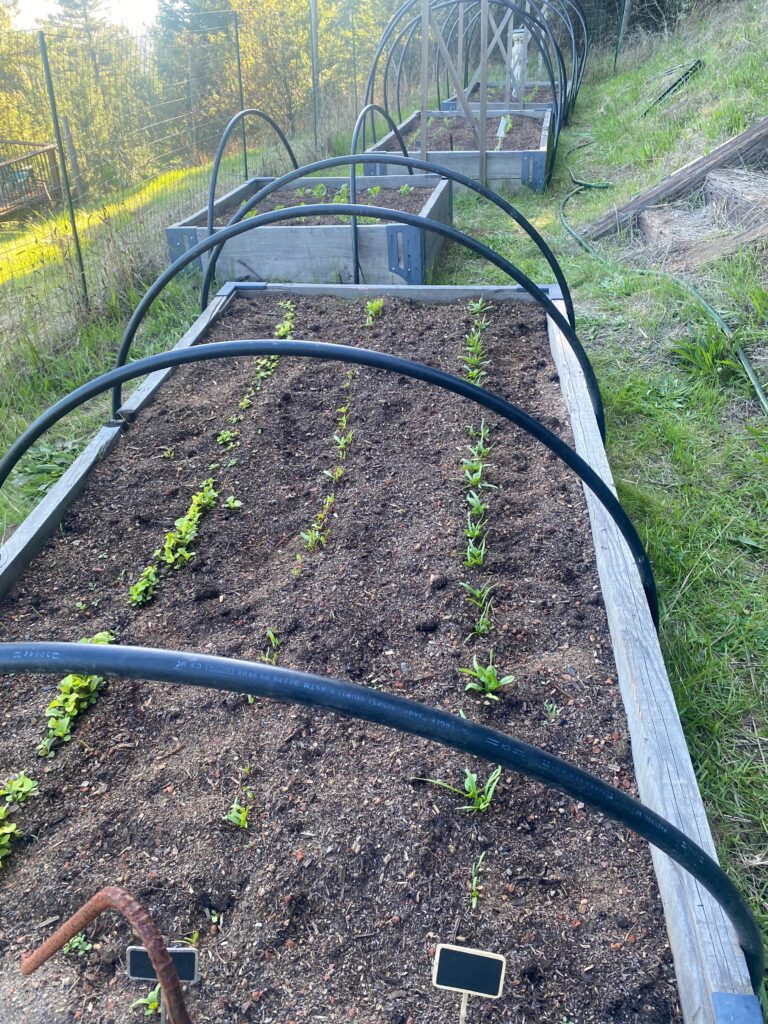
Creating an instant greenhouse with a 3/4″ irrigation pipe, using 6mil plastic sheeting, and garden clips or clamps gives you a simple way to create a weather-resistant bedding cover for frost and heavy rain protection. I pound 12′ of rebar that is 1’2 inch thick into the ground and then create a hoop by attaching the irrigation tubing to both sides of the garden bed, draping the plastic sheeting over the hoops, cutting to size, leaving the longest ends open or closed, and then attach 4 garden clips per hoop. My vegetable gardens have withstood 60 mph winds and pounding rain and I have 4- foot-tall peas in January with a massive number of flowers.
Winterizing with Cardboard & Chips on Garden Paths
Cardboard is great to recycle and use to pave your garden paths and then cover with chips or mulch. When you recycle boxes and use them to line your garden paths, they create a good barrier to weeds. Covering the cardboard, you have laid down with mulch or wood chips creates a beautiful pathway and lowers your garden chores by eliminating weeds.
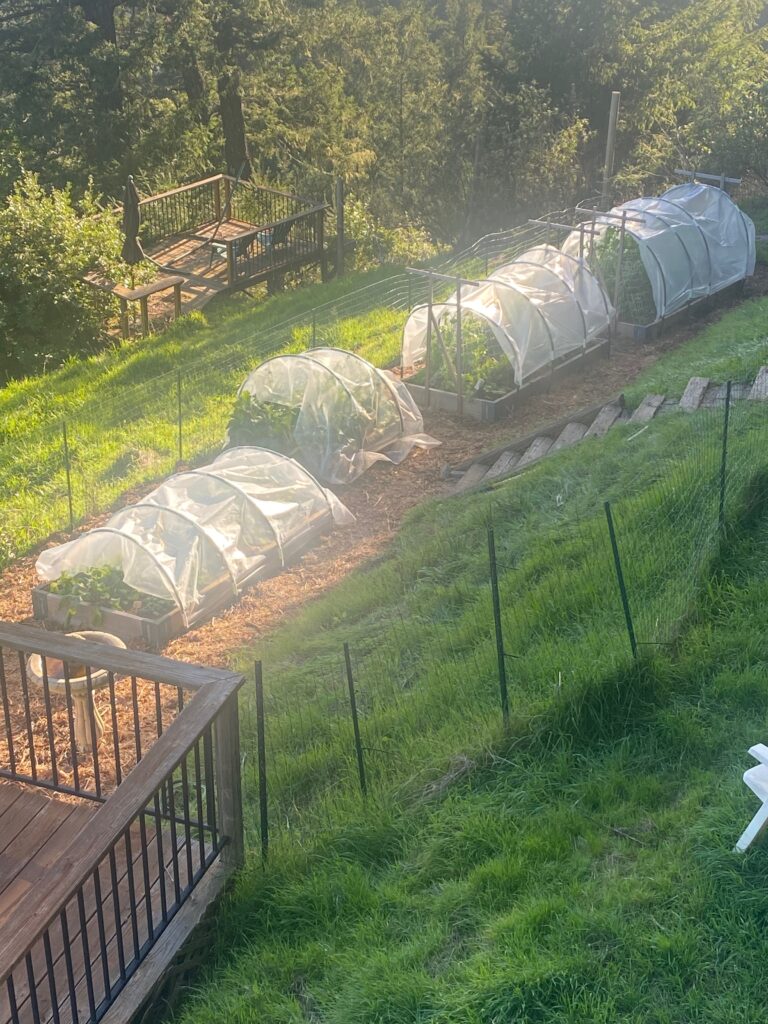
If you are going to cover your pathways with gravel or rocks it’s better to use black plastic 6 mil thick as your underlayment for your garden paths. I tend to like the organic look of wood chips and they are easy to renew with yearly chipping of yard debris.
Winterizing by Mulching Your Plants

Winter brings the need for protection to your landscape plants. Especially if you live in a climate with snow or hard frosts many plants need protection to thrive again in the spring. Using a compost mulch with nutrients helps feed your plants while keeping their root system protected from harsh weather and extremely low temperatures. You can choose to mulch with your favorite mulch, but we tend to like compost and we usually fertilize our plants before adding our mulch.
Putting in a Winter Garden
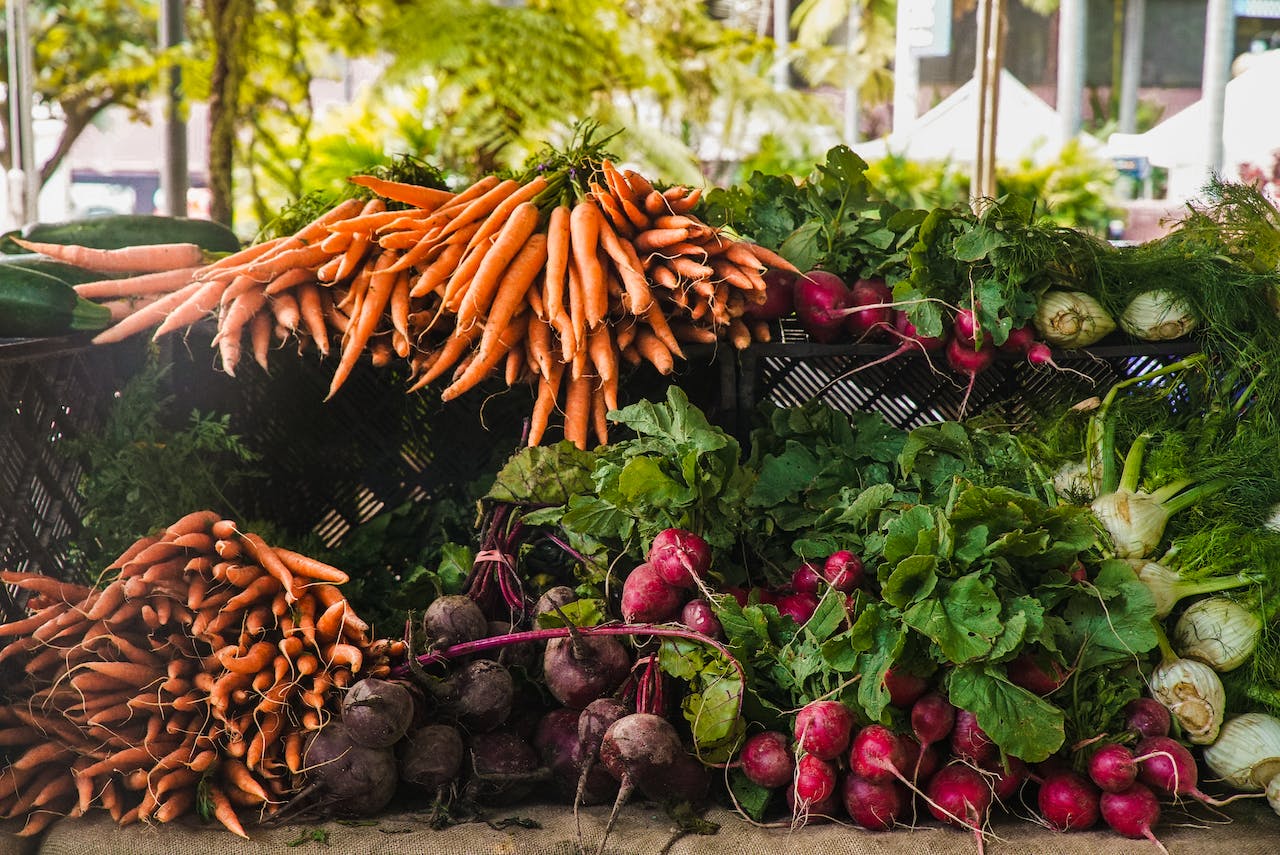
Many vegetables can thrive during the winter depending on where you live. We have eaten all our lettuce that I planted in October and I will be seeding the lettuce area once again this week in January. I can do this since I have built my instant greenhouse so my vegetables are protected in the winter. Many vegetables can be planted in the winter with protection from our semi-hardy or hardy vegetable list above. Here in Northern California I have beets, spinach, lettuce, snap peas, carrots, and Swiss chard.
Time to Prune
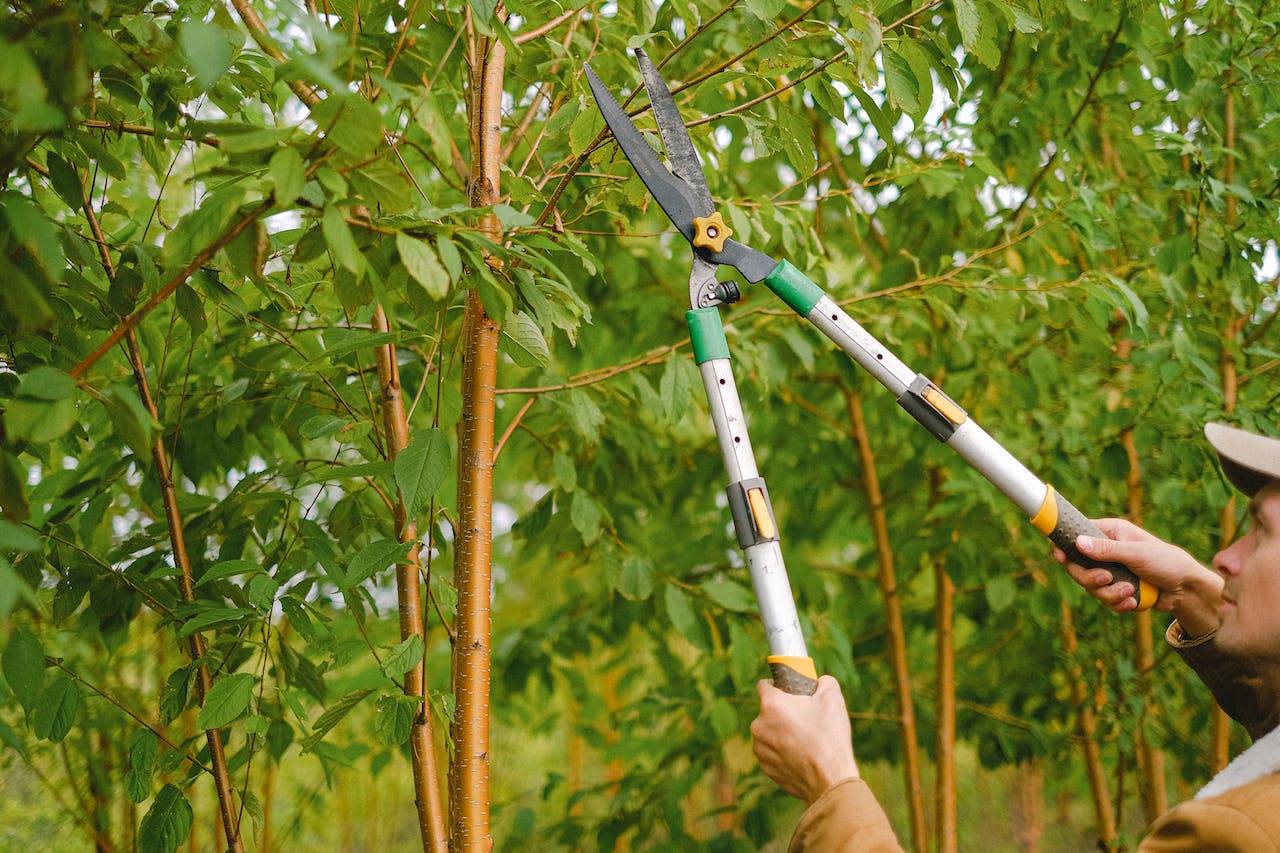
Late fall and winter are the time that most trees, bushes, and other plants lend themselves to pruning. Always prune back to or just above a growing point, branch, or bud, or to the soil line. You can also use the one-third rule means removing one-third of the total height, or one-third of the total number of branches, depending on the plant and how much it needs to be cut back. It’s best to lean to the side of caution and cut too little than too much.
Protecting Tender Plants

Protecting tender plants is important if you live in a climate that tends to get snow or hard frosts. Many times, we push the envelope in what plants we choose for our garden because we like their look. If you have planted plants that are a stretch for your growing zone you realize you need to protect the plants you love. So, draping roses, if you have planted landscape plants that are best in growing zone 8 or above and you live in growing zone 4, you will need to protect those plants that aren’t meant for your growing zone. When we have snow or temperatures in the 20’s I use poles and drapes to protect my roses and ferns so they make it through a cold snap.
Winterizing–Turn Off Watering Systems & Protect Pipes

Turning off your watering systems and protecting above-ground pipes is a must if you live in a climate that is prone to hard frosts or snow. Both of these tasks will save you money and time in the long run. Having a burst pipe when the temperatures have dipped can cause so many problems. One tip that can help your home stay operational year-round is having multiple shut-off values from your water main or well. This way if you have a leak in your garden watering system you don’t have to lose water usage to your home.
Winterize Your Garden Tools
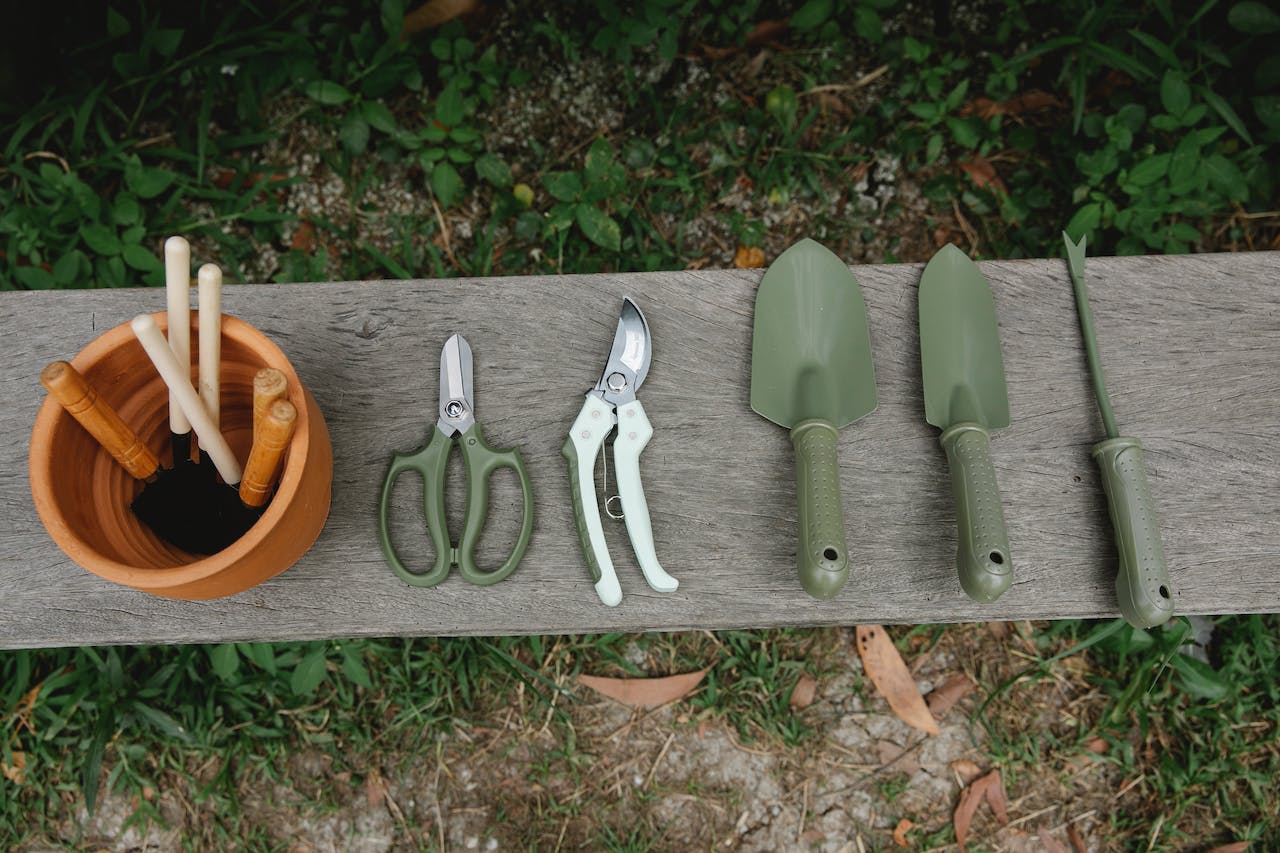
Cleaning your tools as we go into winter is important to the longevity of your tools. Clean all dirt off your tools, oil the metal on your tools, sharpen shovels, hoes, and pruning tools. If your tools have wood handles, immersing them in water to tighten the wood handle to the metal is your first task, and then oiling the oil and putting your tools away for the winter. Dull tools won’t make weeding any more manageable, and dirty tools are a sure way to spread plant diseases and pests to your healthy plants.
Winter is also a great time to plan your next DIY project and involving your family in the project planning helps make it a group effort. Look at some of our new products at Shed Windows and More that can inspire your next DIY project.



